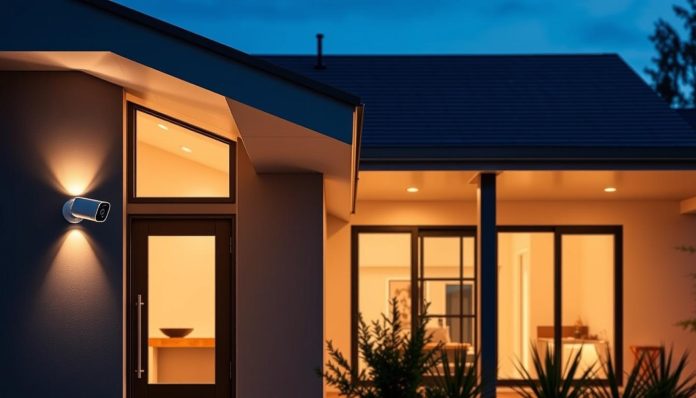When you think about home security, smart cameras might come to mind. Many people want to keep their homes safe with smart devices and cameras, as CNET reports.
It’s crucial to know the risks of these devices and how to reduce them. You should be mindful of privacy concerns and protect your video data.
Key Takeaways
- Understand the risks associated with smart cameras
- Learn how to secure your video data
- Discover best practices for protecting your home
- Explore ways to mitigate potential privacy concerns
- Find out how to safeguard your home security
Understanding Smart Cameras and Their Functionality
In today’s world, smart cameras are key to home security. But how do they work? Knowing about smart cameras is crucial for your home’s safety and privacy.
What Are Smart Cameras?
Smart cameras are advanced security tools that connect to your home network. They let you watch and control your home from anywhere using apps. They have features like motion detection, facial recognition, and cloud storage.
These cameras work indoors and outdoors. They send alerts to your phone or tablet when they see motion. This helps you act fast if there’s a security issue.
How Do Smart Cameras Work?
Smart cameras link to your Wi-Fi to send video to the cloud or local storage. They run on electricity or batteries, depending on the model.
They use infrared LEDs and night vision to see clearly in the dark. This keeps your home safe all the time, without interrupting your day.
- Connect to your home Wi-Fi network
- Stream video footage to the cloud or local storage
- Use infrared LEDs and night vision for low-light conditions
Common Features of Smart Cameras
Smart cameras have many features to boost their security. Some common ones are:
- Motion detection: Warns you of possible threats
- Facial recognition: Knows who’s at home and alerts you to strangers
- Two-way audio: Lets you talk to visitors or intruders
- Cloud storage: Keeps video safe online
- Local storage: Saves video on devices like NAS or SD cards
When picking a smart camera, think about what you need. Make sure your choice fits your Video Surveillance Security and Smart Technology Privacy needs.
Privacy Concerns with Smart Cameras
Smart cameras can make your home safer but also raise privacy issues. It’s key to know the privacy risks they bring.
Risks Associated with Smart Cameras
One big worry is unauthorized access to your camera feed. Hackers might find ways into your home. To avoid this, use robust security measures like strong passwords and keep your camera’s software up to date.
Some systems, like SimpliSafe, have added features to fight off threats. These show how some systems aim to protect your privacy and security.
Data Breaches and Unauthorized Access
Data breaches are a big worry with smart cameras. If your data gets leaked, your privacy is at risk. Choose a camera system that values data security, using end-to-end encryption and safe storage.
- Make sure your camera system uses end-to-end encryption.
- Keep your camera’s firmware updated to avoid known issues.
- Use strong, unique passwords for all camera accounts.
Surveillance and Home Privacy Issues
Surveillance is a key part of smart cameras but raises privacy concerns. Know how your camera watches your home and limit it when needed. For example, adjust the camera’s view or turn off recording when you’re home.
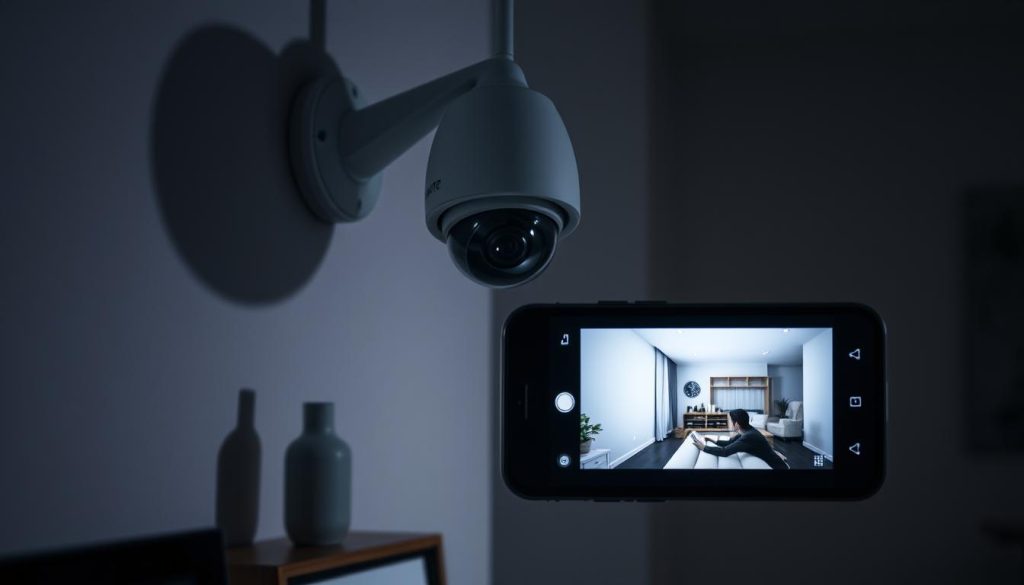
By understanding these risks and taking steps to protect yourself, you can enjoy smart cameras safely. Follow Privacy Best Practices and pick a trustworthy Home Security System.
Legal Regulations Surrounding Video Surveillance
Smart cameras are becoming more common, and it’s important to know the laws about video surveillance. When you set up smart cameras at home, you need to follow the legal rules. This ensures you use these devices correctly.
Overview of Privacy Laws in the U.S.
Privacy laws in the U.S. are complex and differ by state. There’s no single federal law for video surveillance. Instead, many laws at both federal and state levels control video data collection, storage, and sharing.
Key aspects of federal law include:
- The Video Privacy Protection Act (VPPA), which regulates video rental information.
- The Electronic Communications Privacy Act (ECPA), which deals with intercepting electronic communications.
Consent Requirements for Recording
Getting consent is a key part of video surveillance laws. The rules on consent vary a lot from state to state.
There are generally three types of consent laws:
- One-party consent, where only one party needs to know about the recording.
- Two-party consent, where everyone involved must agree to the recording.
- Specific laws for consent in private places.
State-Specific Regulations
Video surveillance laws are not the same everywhere in the U.S. Each state has its own rules and regulations.
| State | Consent Requirement | Specific Regulations |
|---|---|---|
| California | Two-party consent | Strict laws on surveillance, especially in private areas. |
| Texas | One-party consent | Laws allow video surveillance with some restrictions. |
| New York | One-party consent | Has laws on surveillance in private places. |
Knowing these state-specific rules is key to following the law with smart cameras.
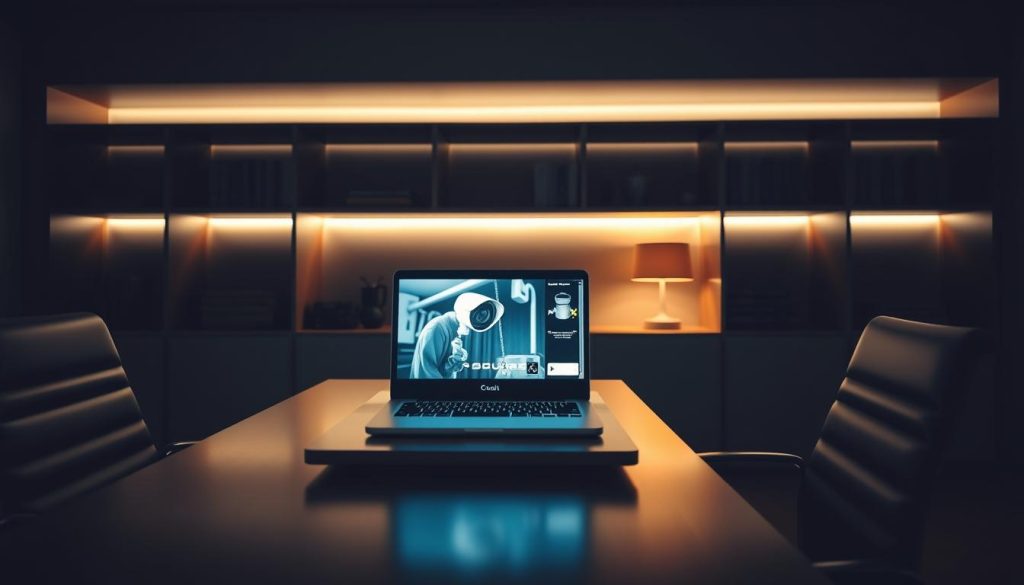
Choosing the Right Smart Camera
When you think about getting a smart camera, it’s key to look at its privacy features. With more smart home devices, protecting privacy at home is very important.
Factors to Consider Before Purchase
Before you buy a smart camera, think about a few things. CNET says resolution, field of view, and if it’s wired or battery-powered are important. Also, check the privacy features for smart cameras like encryption and secure storage. Make sure you can turn off recording or audio if needed.
- Resolution and field of view
- Power source (wired or battery-powered)
- Night vision capabilities
- Motion detection and alerts
- Data storage options (cloud or local)
| Feature | Importance | Considerations |
|---|---|---|
| Resolution | High | At least 1080p for clear images |
| Field of View | High | Wide angle for broader coverage |
| Power Source | Medium | Wired for continuous power, battery for flexibility |
Popular Smart Camera Brands
Many brands are known for their quality and privacy features. Ring, Nest, and Arlo offer models with great privacy features. Pick a brand based on their security and customer support.
How Camera Placement Impacts Privacy
Where you put your smart camera affects your privacy. Place it indoors, away from windows, and not pointing at neighbors. Also, think about who can see your camera’s feed and set up permissions.
By thinking about these things and picking a camera that respects your privacy, you can make your home safer. You won’t have to worry about your personal data.
Securing Your Smart Camera
Protecting your smart cameras is key to keeping your home and data safe. As we use more smart devices, we need to protect them from threats. There are important steps to take to keep your cameras secure and prevent unauthorized access.
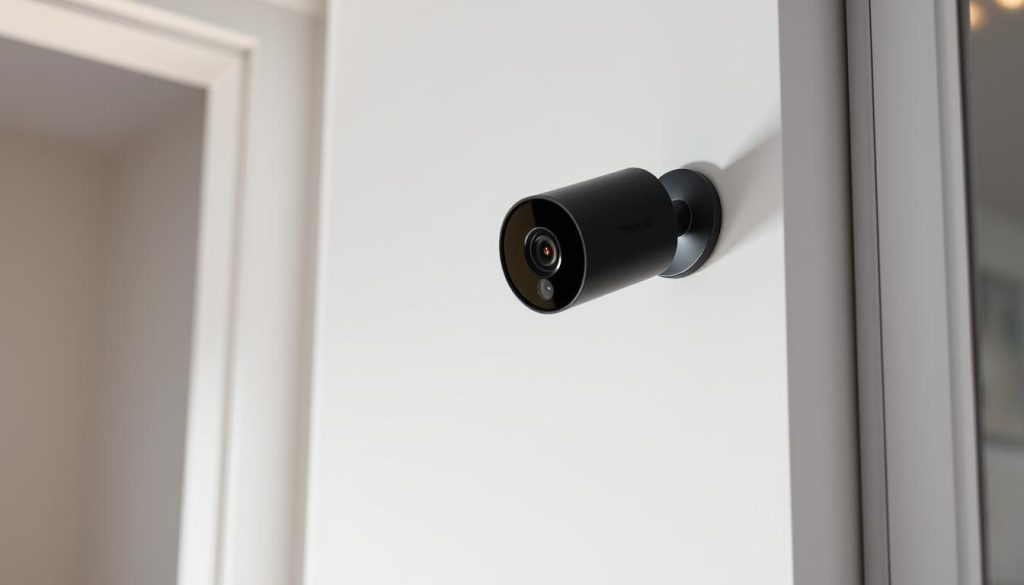
Importance of Strong Passwords
Strong, unique passwords are essential for your smart cameras. A good password is your first defense against hackers. Use a mix of letters, numbers, and symbols. Don’t pick something easy to guess like your name or common words.
CNET suggests using a password manager. It helps create and keep complex passwords safe.
Regular Firmware Updates
It’s important to keep your camera’s firmware updated. Manufacturers often release updates to fix security issues. By updating regularly, you get the latest security patches.
You can find update options in your camera’s settings menu. It’s usually in the app that comes with your camera.
Two-Factor Authentication
Two-factor authentication (2FA) adds extra security to your camera. With 2FA, you need a password and another form of verification. This could be a code sent to your phone or a biometric scan.
This makes it harder for hackers to get in, even if they have your password.
By following these steps, you can greatly improve your smart camera’s security. Protecting your home and data is crucial. Make sure to use Data Encryption for Smart Cameras and keep up with Video Surveillance Security to keep your smart home safe.
Data Storage Options for Video Footage
Choosing the right data storage for your smart camera’s video is key for home security and privacy. Smart technology has brought many options, each with its own benefits and things to think about.
Cloud Storage vs. Local Storage
Deciding between cloud and local storage is important. Cloud storage lets you access your footage anywhere, anytime, if you have internet. But, it might make you worry about Smart Technology Privacy since your data is on remote servers.
Local storage keeps your footage on devices like hard drives or NAS in your home. Brands like Lorex prefer local storage for its privacy over cloud storage.
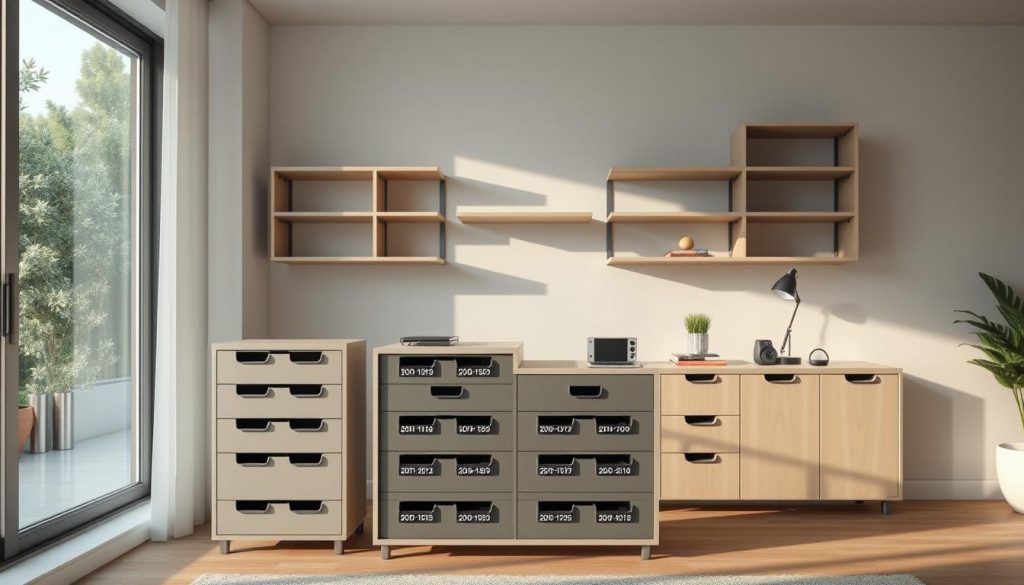
Benefits of Local Storage
Local storage is great for privacy and security. It lets you control who sees your footage. Plus, it works better without internet, which is good for when networks go down.
- More privacy because you’re not using cloud services
- Less chance of online threats
- You have more control over your data
Understanding Data Retention Policies
It’s important to know the data retention policies of your storage choice. This includes how long your footage stays, how it’s protected, and what happens to it later.
| Storage Option | Data Retention | Security Features |
|---|---|---|
| Cloud Storage | Variable, depends on provider’s policy | Encryption, access controls |
| Local Storage | User-defined, based on storage capacity | Physical security, access controls |
By looking at your options carefully, you can choose what’s best for your Home Security Systems and Smart Technology Privacy.
Managing Camera Access and Permissions
To keep your smart camera safe, you must manage who can see your video. This means knowing who can view your footage, setting up user permissions, and knowing how to share camera clips.
Who Can Access Your Video Data?
It’s important to know who can see your camera’s video. Usually, the camera’s owner has full access. But, you can also give others permission. Check your camera’s manual or the manufacturer’s website to see who can access it by default.
Default access settings differ by camera model and brand. Some cameras let you create user accounts with different permissions. Others might have fewer options.
Setting Up User Permissions
Setting up user permissions is key to controlling who sees your video. Most smart cameras let you create multiple user accounts. You can give:
- Admin access to trusted people, so they can manage settings and view footage.
- View-only access to others, like family or guests, so they can see the feed but not change settings.
To set up user permissions, follow the manufacturer’s instructions. You’ll find these in the camera’s app or web interface.
Best Practices for Sharing Camera Footage
When you share camera footage, protect your privacy and security. Here are some tips:
- Only share with trusted individuals: Be careful who you share your footage with, as it might have personal info.
- Use secure sharing methods: Share footage through encrypted channels or secure messaging apps, not via unsecured email or text.
- Limit the duration of shared footage: Share only the necessary clip or time frame, not your entire feed.
By following these tips, you can reduce the risks of sharing your smart camera footage.
Disabling Unused Features for Enhanced Privacy
Protecting your privacy is easier when you turn off features you don’t use on your smart camera. Smart cameras have many features, some useful, others intrusive. By turning off unused features, you can greatly improve your home privacy.
Turning Off Motion Detection
Motion detection alerts you to any movement captured by your camera. It’s useful for security but can cause too many alerts if too sensitive. To turn off motion detection:
- Access your camera’s settings through its app.
- Navigate to the motion detection settings.
- Toggle off the feature or adjust its sensitivity.
Disabling Audio Recording
Some smart cameras record audio. If you’re not using this, it’s best to turn it off for privacy. Here’s how:
- Open your smart camera’s app.
- Go to the camera settings.
- Find the audio recording option and disable it.
Managing Remote Access Settings
Remote access lets you view your camera feed from anywhere. It’s convenient but risky if not managed well. To manage remote access:
Review your camera’s remote access settings regularly to ensure only authorized users have access. Disable remote access when you’re at home to reduce risks.
Here’s a quick guide to improve your smart camera’s privacy by disabling unused features:
| Feature | Steps to Disable | Benefit |
|---|---|---|
| Motion Detection | Access app > Settings > Toggle off | Reduces unnecessary notifications |
| Audio Recording | Open app > Camera Settings > Disable Audio | Protects against unwanted listening |
| Remote Access | Settings > Remote Access > Toggle off when not needed | Minimizes vulnerability to hacking |
By following these steps, you can greatly improve your privacy and security with smart cameras at home. Regularly checking your camera settings and disabling unused features is a key step in protecting your personal space.
How to Monitor Your Smart Camera Setup
It’s key to keep an eye on your smart camera setup for security and privacy. With more smart home devices, making sure your system is safe and works well is crucial.
Using Mobile Apps for Monitoring
Many smart cameras come with mobile apps for remote monitoring. These apps let you see live footage, get alerts, and tweak settings from your phone.
- Download and install the mobile app for your smart camera.
- Log in to your account to see live feeds and control cameras.
- Set up notifications for motion or other events.
Regular Security Audits
Doing regular security audits is essential to keep your smart camera system safe. This means checking for updates, looking at user permissions, and making sure only authorized devices are connected.
| Security Audit Task | Frequency | Importance |
|---|---|---|
| Firmware Updates | Monthly | High |
| User Permission Review | Quarterly | Medium |
| Device Authorization Check | Quarterly | High |
Keeping an Eye on Connection History
Watching your smart camera’s connection history can spot unauthorized access. Most systems log these events, which you can check through the app or web interface.
By checking connection history and using the app, you boost your home’s Video Surveillance Security. Knowing about Privacy Features for Smart Cameras on your device also helps protect your privacy.
What to Do in Case of a Breach
If a security breach happens, act fast to protect your smart home. A breach can harm your Smart Technology Privacy and risk your personal data.
Immediate Steps to Take
First, change your passwords right away. Make sure they are strong and different from others. Also, check if your camera’s software is updated. Updates often fix security issues.
Next, disconnect the device from the network. You can do this by unplugging it or turning off its network. Quick action is key to limit damage.
Reporting Concerns to Authorities
After acting fast, report the breach to the right people. This could be your internet provider, the camera maker, or the police. Reporting helps you get support and advice.
Keep a record of the breach. Note the date, time, and details. This info is useful for reporting and any future checks.
Tips for Preventing Future Breaches
To avoid future breaches, use strong security. Choose a reputable brand for your Data Encryption for Smart Cameras. Update your camera’s software and use unique, strong passwords.
Also, think about using two-factor authentication (2FA). 2FA adds an extra step, making it harder for hackers to get in.
By following these tips, you can make your smart home safer and keep your privacy secure.
Building a Trustworthy Smart Home Ecosystem
To make a secure smart home, you need to do several things. First, make sure all devices are secure. Choose brands you can trust. Also, teach your family about keeping their data safe.
Securing Devices and Data
It’s important to secure all your devices. Use Home Security Systems that protect everything, like cameras and doorbells. Brands like SimpliSafe are great because they’re safe and easy to use.
Choosing Reputable Brands
Choosing the right brands is key to a secure smart home. Look up brands and read what others say about them. Sites like CNET can help you find the safest smart home devices.
Educating Family Members
Teaching your family about privacy is crucial. Make sure they know how to use devices safely. This includes using strong passwords and understanding how to manage camera access.
By following these steps, you can make a smart home that keeps your privacy and security safe.
